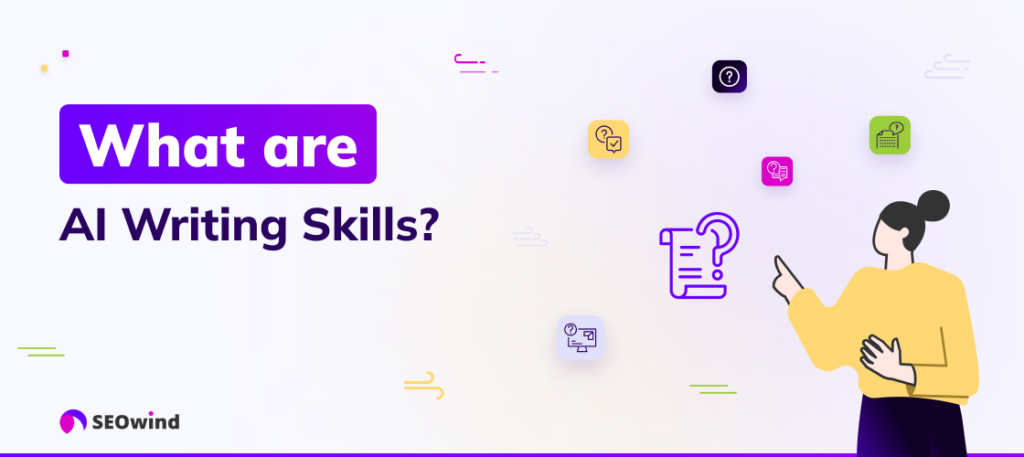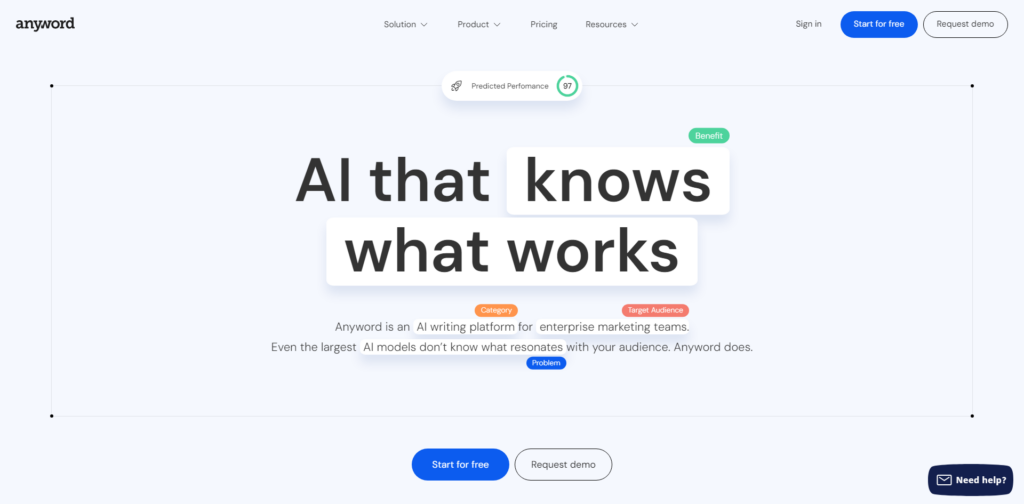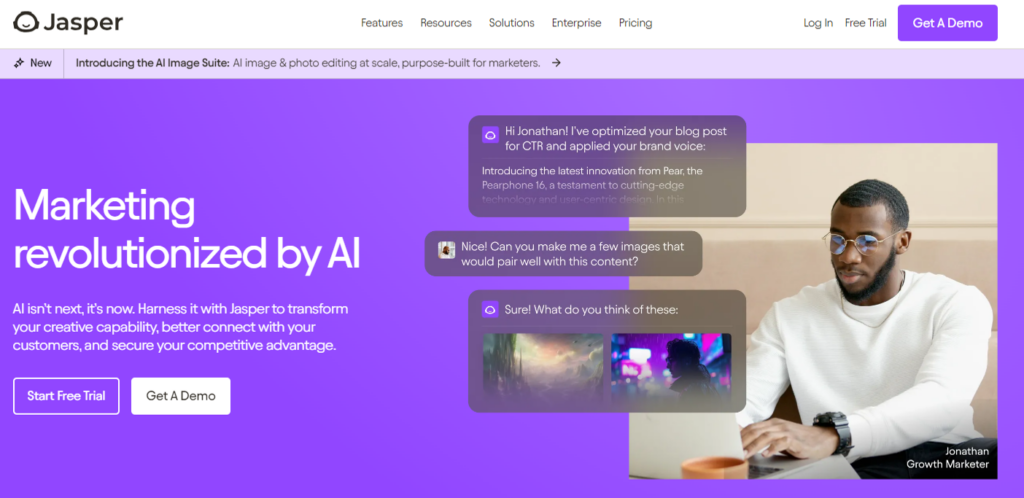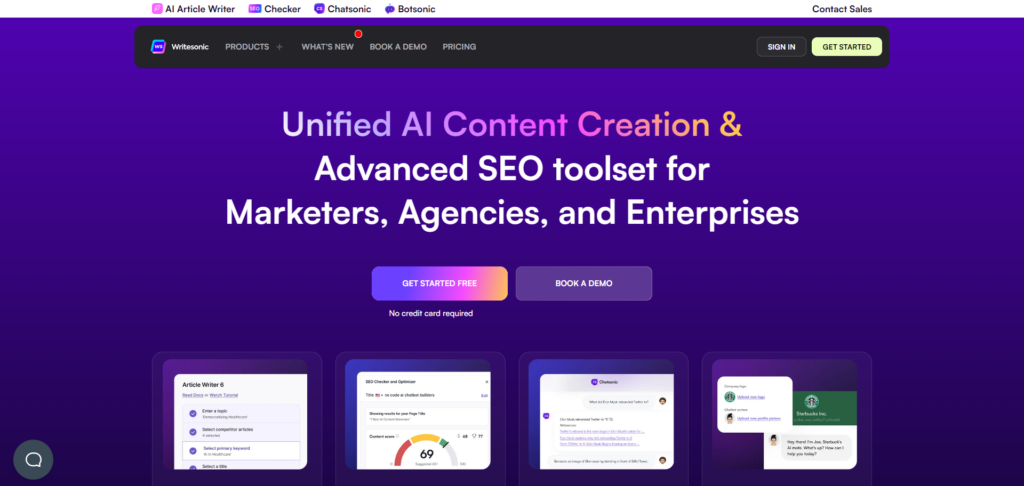Artificial Intelligence (AI) has transformed how content creators work. Yet many haven’t fully embraced its potential. This guide walks you through AI writing skills to use AI effectively for content creation, with practical applications from real-world experience.
What Are AI Writing Skills?

AI writing skills involve effectively using AI-powered technologies to generate human-like text. These tools can adapt to various tones, styles, and contexts, even capturing nuances of emotion and humor when properly instructed.
This capability has transformed how we define quality content in the digital age. Modern AI writing assistants significantly accelerate content creation from marketing copy to technical documentation.
Using AI writing tools effectively requires distinct skills that differ from traditional writing. These skills: prompt engineering, understanding AI capabilities, and effective collaboration have become increasingly valuable.
AI Writing Skills vs Traditional Writing Skills
Traditional and AI writing skills represent fundamentally different approaches to content creation.
Traditional writing skills involve crafting compelling narratives and developing complex arguments using precise language, grammar, and tone. This requires creative thinking and communication developed through years of practice.
AI writing skills focus on effectively employing tools like ChatGPT, Claude, or Gemini to enhance content creation. This means understanding how these technologies work and leveraging their capabilities efficiently.
Here’s how they compare:
| Criteria | Traditional Skills | AI Writing Skills |
|---|---|---|
| Authorship | Sole responsibility for content rests with the human author | Acting as a guide directing the AI tool to create content meeting specifications |
| Knowledge | Requires extensive subject expertise | Focus on effectively instructing the AI, which already contains vast knowledge across domains |
| Productivity | Limited by cognitive capacity and typing speed | Can generate large volumes of text within seconds, dramatically increasing productivity |
| Creativity vs. Objectivity | Personal creativity naturally influences writing | Can maintain strict objectivity, though with limitations in originality |
These skillsets are complementary rather than competitive. According to McKinsey, the use of generative AI increased from 33% in 2023 to 71% in 2024, showing how rapidly organizations are adopting these technologies to enhance their content production capabilities.
Essential AI Writing Skills for 2025
To effectively harness AI for content creation, you’ll need to develop several key skills that bridge human creativity with machine efficiency:
1. Prompt Engineering
Prompt engineering involves crafting adequate instructions for AI writing tools. This skill guides the AI to produce your desired output. Without proper prompt engineering, even sophisticated AI tools deliver mediocre results.
“To get great results from AI, treat it like a team member, not a magic box,” notes Kate Kandefer, SEOwind’s CMO. “Give it a proper brief. Explain the task, goal, and the why behind it. When we implemented this approach at SEOwind, our revision cycles dropped by 40% almost immediately.”
Effective prompt engineering includes:
- Providing clear, precise instructions with specific parameters
- Including contextual information to guide AI understanding
- Defining the desired tone, style, and format
- Supplying examples of what success looks like
Here’s a prompt template our team uses regularly:
Role: You are a [specific expertise] content specialist writing for [target audience]
Context: This piece will appear on [publication], which typically covers [topics]
Task: Write a [content type] about [specific topic] that addresses [key pain points]
Format: Include [X] sections covering [specific aspects], with a total word count of [number]
Tone: Write in a [descriptive tone] style that reflects [brand voice characteristics]
2. Understanding AI Strengths and Limitations
Recognizing the capabilities and constraints of AI writing tools is crucial for maximizing their effectiveness:
Strengths:
- High-speed content generation (minutes versus hours)
- Consistent output that doesn’t suffer from fatigue
- Ability to adapt to various tones and formats
- Built-in knowledge across numerous domains
Limitations:
- Limited creative originality and unique insights
- Potential for factual errors or “hallucinations”
- Difficulty with highly nuanced emotional content
- Dependence on the quality of your initial instructions
Fei-Fei Li, Co-Director at Stanford University’s Human-Centered AI Institute, explains this balance: “Artificial intelligence is not a substitute for human intelligence; it is a tool to amplify human creativity and ingenuity.”
3. The CyborgMethod™: Effective Human-AI Collaboration
The CyborgMethod™ represents the strategic integration of human expertise with AI capabilities. This approach leverages the strengths of both humans and machines to create superior content more efficiently.
The method encourages writers to leverage their inherent advantages: creativity, intuition, and empathy, while harnessing the machine’s data processing and analytical strengths.
Examples of the CyborgMethod™ in action include:
- Using AI to generate initial outlines and drafts based on your strategic direction
- Applying human expertise to refine AI-generated content with nuance and creativity
- Employing AI for research and data analysis, while humans provide interpretive insights
- Optimizing workflows by delegating repetitive tasks to AI while focusing human effort on high-value content decisions
When SEOwind implemented this method for client content production, we experienced a 35% reduction in time-to-publish while maintaining our quality standards. The key was establishing clear handoff points between AI and human contributors in the workflow.

Backlinko’s editorial team recommends a similar approach: “The best AI writing output happens through conversation. Share your half-formed ideas. Question its suggestions. Challenge it to think deeper.” This interactive collaboration produces better results than simply accepting AI’s first output.
4. Research Skills for Providing Context
Despite common misconceptions, AI writing tools don’t automatically possess comprehensive knowledge about specific industries, brands, or recent developments. Providing them with accurate context through research is essential.
Research skills for AI writing involve:
- Gathering relevant background information before prompting
- Supplying accurate data points and statistics to inform the AI’s output
- Providing competitive analysis and industry-specific terminology
- Ensuring the AI understands the specific audience and their needs
When we created a financial services series for a client, we first compiled a research document outlining regulatory requirements, industry terminology, and competitor approaches. This preparation resulted in first drafts requiring 40% less editing than prompts without this research foundation.
5. Courage to Test and Experiment
Mastering AI writing starts with courage. The tech is new and intimidating, but those willing to experiment unlock game-changing creative potential. Think of AI tools not as threats, but as fresh canvases. Like any artist, you begin with rough strokes, mistakes included. Curiosity drives progress: tweak inputs, analyze outputs, and iterate. Don’t ditch the draft. Study what worked and what didn’t.
Failure isn’t the enemy. It’s the process. Just as Edison and Musk pushed through setbacks, real growth with AI writing comes from fearless trial and error. Bold experimentation builds not just better content, but better writers. Human creativity, amplified by AI, needs guts. Without it, you miss the magic.
Top AI Writing Tools in 2025
Based on recent industry reports and user reviews, these AI writing tools stand out for their capabilities, reliability, and specific use cases:
1. Grammarly

Ranked as the overall winner in TechRadar’s AI writer rankings, Grammarly offers real-time writing assistance and grammar checking beyond basic corrections. It excels in providing contextual writing suggestions and improvements.
Best For: Professional communications, academic writing, and general writing improvement across various formats.
2. Anyword

Anyword specializes in SEO-focused and data-driven content generation, with unique performance predictions for copy. It’s specifically designed with marketers in mind.
Best For: Marketing copy and campaigns, SEO-optimized content creation, and data-informed copywriting.
3. Jasper

This enterprise-level AI writing platform offers robust collaboration features for teams and excels at content generation at scale. Jasper claims its assistant can reduce the time spent on first drafts by 80% and drive a 3.5x return on investment.
Best For: Enterprise teams requiring collaborative content creation, marketing departments with high-volume content needs, and businesses seeking consistent brand voice across multiple content pieces.
4. SEOwind

SEOwind excels in automating the most time-consuming aspects of content creation, research, and planning, while providing the flexibility to infuse your expertise and brand voice. Its unique CyborgMethod™ blends AI precision with data-driven strategy, resulting in authoritative and engaging content.
Best For: content marketers, SEO specialists, digital marketing agencies, and freelancers who must streamline research, create detailed content briefs, and produce high-quality, SEO-optimized articles at scale. It’s especially valuable for teams aiming to outpace competitors with data-rich, authoritative content and businesses seeking to enhance their organic search visibility.
5. Writesonic

Starting from $16/month, Writesonic offers flexible content generation options supporting multiple content formats with budget-friendly pricing options.
Best For: Small businesses and startups, content marketing at various scales, and versatile content needs across different platforms.
When choosing an AI writing tool, consider your specific needs, budget, and the types of content you create most frequently. Many platforms offer free trials or limited free versions, allowing you to test their capabilities before committing to a subscription.
Ready-to-Use Prompt Templates
Based on our experience at SEOwind, these prompt templates consistently deliver high-quality results for different content types:
Blog Post Prompt Template
Topic: [Your topic]
Target audience: [Describe your ideal reader]
Primary keyword: [Main keyword]
Secondary keywords: [2-3 related keywords]
Word count: [Desired length]
Tone: [Conversational/Professional/Authoritative/etc.]
Structure: Include an engaging introduction, [X] subheadings covering [specific aspects], practical examples, and a conclusion with a call to action.
Special instructions: Include statistics where relevant, focus on actionable advice, and highlight [specific benefit/approach].
Product Description Prompt Template
Product name: [Product name]
Category: [Product category]
Target customer: [Ideal customer profile]
Key features: [List 3-5 main features]
Key benefits: [List 2-3 main benefits]
Unique selling proposition: [What makes this product special]
Word count: [Typically 150-300 words]
Tone: [Persuasive/Friendly/Technical/etc.]
Call to action: [Desired next step]
Social Media Caption Template
Platform: [Instagram/LinkedIn/Facebook/Twitter/etc.]
Content type: [Image/Video/Link share/etc.]
Purpose: [Brand awareness/Engagement/Lead generation/etc.]
Key message: [One sentence summary of main point]
Tone: [Casual/Professional/Inspiring/etc.]
Length: [Character count appropriate for platform]
Hashtag strategy: [Branded/Trending/Niche/etc.]
Call to action: [What you want followers to do]
Expert Interview Questions Template
Interview subject: [Name and title]
Subject expertise: [Their area of specialization]
Interview purpose: [Publication/Content type]
Audience knowledge level: [Beginner/Intermediate/Advanced]
Topic focus: [Specific aspect of their expertise]
Generate [X] questions covering:
– Background and experience
– Current industry trends
– Practical advice for readers
– Future predictions
– Personal insights
Make questions open-ended and thought-provoking while avoiding basic information available elsewhere.
Case Study Outline Template
Company/Client: [Name]
Industry: [Industry]
Challenge: [Brief description of the problem]
Solution: [Your product/service/approach]
Results: [Quantifiable outcomes]
Create a detailed outline for a 1000-word case study including:
1. Executive summary (100 words)
2. Company background (150 words)
3. Challenge section with specific pain points (200 words)
4. Solution implementation details (300 words)
5. Results with metrics and testimonials (200 words)
6. Conclusion with lessons learned (50 words)
Include 3-5 potential pull quotes and suggestions for data visualization.
Real-World Case Studies – AI Writing Skills
The Washington Post: Automated News Production
Implementation: In 2016, The Washington Post integrated Heliograf, an AI writing tool designed to automate news story creation. The system was configured to analyze data inputs and generate news stories in real-time using machine learning algorithms.
Challenges Overcome:
- Adapting journalists to work alongside AI-generated content
- Ensuring quality control for machine-written articles
- Maintaining journalistic standards while increasing content volume
Measurable Results: The Washington Post significantly increased publishing capacity, allowing coverage of more events while producing content in a fraction of the time compared to human-only reporting.
HubSpot: AI-Enhanced Content Ideation
Implementation: HubSpot integrated the Blog Ideas Generator, an AI-powered content ideation tool, into its content planning workflow. The system was designed to suggest relevant blog topics based on specific keywords and industry trends.
Challenges Overcome:
- Maintaining fresh and engaging content consistently
- Scaling content ideation without expanding the content team
- Staying ahead in the competitive digital marketing space
Measurable Results: HubSpot generated large volumes of blog topic ideas in significantly reduced time, increased blog freshness and engagement metrics, improved content planning efficiency, and enhanced website traffic through more targeted content topics.
SEOwind’s Implementation Journey
When our team first adopted AI writing tools in 2023, we faced significant resistance from our writers who worried about job security. We started with a pilot program focused on creating content outlines only, a task many writers found tedious but necessary.
The Challenge: Writers spent 2-3 hours creating comprehensive outlines for specialized industry topics, leaving less time for adding unique insights and polishing prose.
Our Solution: We developed a hybrid workflow where:
- Content strategists created a brief with key requirements
- AI generated initial outline options based on these requirements
- Human editors refined these outlines, adding original angles
- Writers then created content with both AI assistance and their expertise
The Results: After full implementation across our team of 12 writers:
- Outline creation time decreased by 75% (from 2-3 hours to 30-45 minutes)
- Content production capacity increased by 32% without adding staff
- Client satisfaction increased by 18% due to more consistent quality
- Writers reported higher job satisfaction as they could focus on creative aspects
The key to success wasn’t just implementing the tools. It was redesigning our workflow to support the CyborgMethod™ approach, where humans and AI each handled the aspects they excel at.

Ethical Considerations in AI Writing
As AI writing tools become more sophisticated, ethical considerations have emerged as a crucial component of responsible usage:
Transparency and Disclosure
Academic institutions and content platforms increasingly emphasize the importance of disclosing AI assistance. Many universities now require students to state whether generative AI contributed to any stage of their writing process.
Best practice is to be transparent about AI involvement, particularly in academic, journalistic, and professional contexts. This builds trust with your audience and acknowledges the collaborative nature of AI-assisted content.
Plagiarism Prevention
Even when using AI, ensuring original content remains your responsibility. AI writing tools should serve as assistants rather than sources of content passed off as entirely human-created.
Implement these practices:
- Use plagiarism detection tools on all AI-assisted drafts
- Manually verify sources and cross-check flagged passages
- Keep records of AI-generated suggestions and external references
Maintaining Content Authenticity
“AI content doesn’t underperform because it’s AI,” explains Tom Winter, SEOwind’s Founder. “It fails when it’s shallow, vague, and unreviewed. Google doesn’t punish AI. It punishes junk.”
To maintain authenticity:
- Use AI as a writing coach for feedback and structure, not the sole creator
- Inject your expertise, perspective, and original insights
- Follow E-E-A-T principles (Experience, Expertise, Authoritativeness, Trustworthiness)
- Polish AI outputs with your unique voice and perspective
At SEOwind, we’ve established clear internal guidelines defining acceptable AI usage across different content types and client requirements. This has helped maintain content integrity while still benefiting from AI assistance.
The SEOwind AI Writing Implementation Framework
If you’re using SEOwind or any serious AI writing tool, blind automation won’t cut it. You need a system that combines strategy, structure, and clever AI use. Here’s the process we recommend based on real-world deployments.
Phase 1: Get Your Foundation Right
Start by setting up for scale, without the chaos.
- Content audit: Use SEOwind to identify articles worth updating or creating, focusing on evergreen, high-potential keywords.
- Team & process review: Who owns briefs? Who edits? Who reviews AI drafts? Define roles before you generate a single word.
- Tool alignment: Set up SEOwind with your brand voice and tone preferences, and choose relevant research sources (SERP, internal docs, etc.).
- Benchmarks: Document your current content velocity, organic traffic, and quality metrics so you can measure impact later.
Phase 2: Controlled Test Runs
Before scaling, make the system work in a safe sandbox.
- Start with existing content: Run SEOwind updates on blog posts with declining traffic. You already know the topic and audience; it’s a low-risk test case.
- Create AI-ready briefs: Build briefs inside SEOwind using its AI-driven research, outline, and question suggestions. This ensures context-rich output.
- Develop prompt templates: Tweak the built-in SEOwind prompts to fit your tone, structure, and product knowledge. Save them as presets.
- Train your team: Walk through the flow, from research to article to review, so everyone sees how humans and AI co-create.
Phase 3: Integrate into Your Content Engine
Now it’s time to plug AI directly into your editorial pipeline.
- Standardize workflows: Use SEOwind projects to manage briefs, draft creation, and article refinement. Establish handoff points between AI and humans.
- Implement quality control: Layer in manual review, fact-checking, and EEAT enhancements using SEOwind’s in-app AI refinement tools.
- Build your knowledge base: Document prompt tweaks, editing rules, and formatting standards that yield the best results.
- Track outcomes: Monitor production time, rankings, CTR, and conversions to justify the AI investment.
Phase 4: Optimize & Expand
Refine what works. Ditch what doesn’t. Then scale.
- Iterate on prompts & briefs: Update your SEOwind templates based on what generates the best-performing content.
- Expand to new formats: Move from blog posts to landing pages, product descriptions, or knowledge base content using SEOwind’s multi-template system.
- Upskill your team: Go deeper on prompt engineering and brand-specific tuning so output sounds less generic and more “you.”
- Celebrate wins: Share before-and-after examples, traffic growth, and saved hours across your org. Get buy-in for bigger AI bets.

Bottom line:
Teams using this framework with SEOwind typically see a 30–40% jump in content output within a few months, without sacrificing brand voice or SEO impact. It’s not just faster, it’s smarter content at scale.
Common AI Writing Skills Questions

Can I use AI to improve my writing?
Absolutely! AI writing tools can significantly enhance your writing in several ways:
- Error identification: Tools like Grammarly identify grammar, punctuation, and spelling errors that are easy to miss during self-editing.
- Style improvement: AI platforms analyze your writing against databases of professional content to suggest improved word choices and sentence structures.
- Readability enhancement: These tools evaluate how easily your target audience can understand your message, suggesting simplifications when needed.
- Content organization: AI can help structure your ideas logically and identify gaps in your argument or narrative.
Remember that AI tools should complement your efforts, not erase your unique style. They work best when enhancing your voice rather than replacing it entirely.
How does an AI content assistant improve writing efficiency?
AI content assistants dramatically improve efficiency through:
- Accelerated drafting: Generate complete drafts in minutes rather than hours, eliminating writer’s block and providing a solid starting point.
- Streamlined editing: AI tools flag problematic areas and suggest improvements to shorten the editing cycle.
- SEO optimization: Many AI writing assistants can suggest optimized headers and keywords that align with search algorithms, improving content discoverability.
- Research assistance: AI can quickly synthesize information from multiple sources, providing well-researched content foundations.
- Consistent output: AI helps maintain consistent quality and tone across large volumes of content, even when multiple team members are involved.
The use of AI writing tools grew by 50% from 2023 to 2024, reflecting their growing importance in content creation workflows.
How do I maintain my brand voice when using AI writing tools?
Shreelekha, a content professional referenced in Backlinko’s article on AI writing practices, shares her approach: “I create different projects for different aspects of my writing. This helps me maintain focus and ensures AI has exactly the context needed for each task.”
To maintain your distinctive brand voice:
- Provide the AI with examples of your existing content that exemplify your brand voice
- Include specific instructions about tone, vocabulary, and stylistic preferences
- Review and refine AI-generated content to ensure it aligns with your brand identity
- Create a brand voice guide that can be included in your prompts consistently
- Use consistent feedback to train the AI on your preferences over time
SEOwind maintains a “voice library” with exemplar content for each client’s specific tone and style. When creating new content, we include snippets from this library in our prompts, resulting in AI-generated drafts that better match each client’s unique voice.
What types of content work best with AI assistance?
While AI can help with virtually any content type, it excels particularly with:
- Structured content: Product descriptions, technical specifications, and data-driven reports
- Repetitive content: Email templates, social media posts, and routine updates
- First drafts: Initial outlines and drafts that will be refined by human editors
- Research summaries: Condensing large volumes of information into digestible formats
- Content variations: Creating multiple versions of similar content for testing
Content requiring deep emotional resonance, original thought leadership, or personal anecdotes typically needs more human input. However, AI can still assist with structure and language refinement.
The Future of AI Writing Skills
Mastering AI writing skills represents a significant competitive advantage in today’s content landscape. Rather than replacing human creativity, these tools amplify our capabilities, allowing us to produce more high-quality content with less effort.
Backlinko’s editorial team recommends: “Build Progressive Context… Your conversation with AI should evolve as your content develops.” This approach recognizes that the most effective AI implementation is interactive and iterative – a true collaboration between human and machine.
By developing prompt engineering skills, understanding AI capabilities, implementing the CyborgMethod™, and adhering to ethical guidelines, you can harness the full potential of AI writing tools while maintaining your unique voice and expertise.
Remember that AI doesn’t make great content; you do, with the right strategy, guidance, and systems. AI is your co-pilot, but you’re still flying the plane.
Start small, experiment consistently, and build your AI writing skills systematically. The investment in developing these skills will pay dividends through increased productivity, improved content quality, and greater creative freedom as you delegate routine tasks to your AI assistant.


